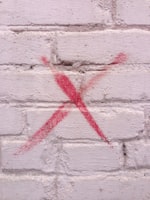This time last year, the Toronto Maple Leafs signed undrafted college player Trevor Moore to a three year entry-level contract. At the time, it looked like a savvy pick-up: Moore was an offensively gifted, undersized forward with great numbers in the NCAA. It seemed like they were taking a flier on a kid with skill who went undrafted because of his size.
Moore missed our 2016 list, in part because rankings were already finalized before he signed with the team. This year, Moore missed the cut again. He received five out of a possible 12 votes and came in 27th.
The player
Moore burst on the scene last summer at the Leafs development camp. He showed off his skill in scrimmages on a line with Mitch Marner and Adam Brooks and was signed to an ELC on the strength of his play.
Moore is the third most well-known of the trio of California born players who joined the Leafs organization in the summer of 2016 (behind Auston Matthews and Kerby Rychel). En route to the NCAA, he played two years with the Tri-City Storm in the USHL.
He played three years at the University of Denver. In his time there, he scored nearly a point-per-game, was one of the team’s biggest offensive threats, and was relied on to play against the opposition’s best players. Here’s what his coach, Jim Montgomery, had to say about him during his freshman season:
He has an extremely creative and dynamic mind — creating being his vision, finding teammates all over the ice, and dynamic how many times he beats people in the corner and off the rush. He’s not a guy who just beat you with speed, but going east and west too.
In a 2015 draft profile, SBN College Hockey also praised his play-making but they were cautious about his skating ability:
Moore possesses tremendous hockey sense and puck skills making him an incredible offensive force. He sees the ice well and understands how to get to the right spot on the ice at the right time to create offense. He's very comfortable with the puck on his stick and likely projects as more of a set-up man, but is capable of finishing off plays as well.
The big area of concern for Moore is his size. Being well under six feet tall in itself isn't necessarily a problem, but Moore's style of play isn't necessarily what you see out of smaller players that make it in the NHL. His skating is good enough to be average, but likely won't be a big asset to him. He doesn't play a heavy, physical game for his size either.
In his first year of draft eligibility (2013), he was ranked 192nd on NHL Central Scouting’s list of North American players. Despite being on the scouts’ radar he wasn’t drafted that year, nor was he drafted in his subsequent two years of eligibility. His size, among other things, seemed to make teams wary of taking a risk on him.
In the 2015-16 season, while the Leafs were tanking to a last place finish, all eyes were on the Marlies. Led by wunderkind William Nylander, the team was one of the AHL’s most dominant. By the time Moore came around, though, people’s attention shifted back to the Leafs and Moore’s first professional season seemed to fall under the radar.
During the season, Moore bounced around a lot, playing with a lot of different players on different lines on both wings. He was behind players like Brendan Leipsic and Kasperi Kapanen on the depth chart but, with injuries and call-ups, he moved up into the top-six at various points. By all accounts, his play improved a lot as he got accustomed to the pace of the league.
On the other hand, he didn’t register as many shots as I’d like to see from a player with a highly touted offensive game like Moore. The available AHL statistics are quite limited and don’t paint a complete picture (maybe he’s more of a passer than shooter) but Moore averaged 1.35 shots per game. Other wing prospects shot at higher rates, including Dymtro Timashov (1.7), Kapanen (2.81), Andreas Johnsson (1.84), Leipsic (2.98), and Rychel (2.53).
Still, it says something that, after Carl Grundstrom joined the Marlies late in the season, Marlies coach Sheldon Keefe chose to sit Timashov instead of Moore. On locker clean-out day, Keefe talked about the Marlies rookies:
Those are two young first-year players [Moore and Timashov] that early in the season really struggled. A lot of it was through lack of opportunity. All of a sudden, going from top players on other teams to now the reality of playing lower in the lineup and really having to struggle for your minutes and compete for your minutes and be good defensively, I think a lot of that caught them off guard. They were not close, frankly, but they stuck with it and when injuries happened and they got more opportunity they showed they were ready for it and took advantage of those opportunities and were better players because of that down the stretch.
Ranking players in the last five to ten spots on this list is always a challenge: it’s hard to distinguish players most of us haven’t seen play just by looking at scouting reports, boxcars, and highlight clips. Moore’s history playing in familiar leagues with many comparables means it’s easier to judge his progress than a player in the VHL, for example.
With that caveat, here’s why Moore ended up on my list ahead of players who made the list. He wasn’t a superstar last season but he was a steady performer who got better as the season went on. Combined with his offensive output in the NCAA, he’s put together a pretty solid body of work. He’s already shown that he’s good enough to succeed in the AHL—something that I view as the best-case scenario for other players like honourable mentions Dakota Joshua and JJ Piccinich.
Moore’s stats also compare favourably to other former NCAA players, including some legitimate NHLers.
That said, he is a small winger in an organization full of them and, given the Leafs’ depth chart, I wouldn’t bet on him getting more than a small taste of the NHL. Still, I wouldn’t be surprised if he ends up bringing more value to the organization than some of the players ahead of him.
Quotes
Here’s what other voters had to say about Moore.
Katya comes after a fan-favourite prospect while praising Moore:
I can't separate Moore from Dmytro Timashov. They are of a size, almost identically, they play a similar game, they were often swapped for each other in the Marlies lineup by Sheldon Keefe, and their overall results are very similar. Timashov had a poor shooting percentage, and Moore had a very good one, while they both shot the puck a lot. Timashov has the buzz, Moore is that guy no one can remember the Leafs signed last year out of development camp.
I ranked Moore higher, and he made my top 25, because he was the better player on the Marlies. Even accounting for the shooting percentage issue, he produced more offence. He has a more aggressive style to his game, he crashes the net, he digs in hard, he plays over his weight class. He's tough, he's smart, and he spent his college career as a top line guy, and he plays like he expects to be scoring goals even when he's on the fourth line.
Moore, although he is almost a year older, looks like his second AHL season could be big. Timashov hasn't quite made the leap to AHL success.
Annie ranked him the highest at 22:
Basically, my thoughts on Moore were that he's a solid player at the AHL level. He might never exceed that, but I am a cynic who doesn't trust the youth so he gets points for that even if I'm not sure he'll go further.
Species, who was on the Marlies beat all season, explains why he didn’t rank Moore:
There were many players at the end of my Top 25 list I spent a considerable amount of time on whether to add or not. For the lowest ranks of the list, I prioritized players I perceived I think are high risk but high reward. Essentially, my selections for the last three spots are like a gambler betting everything he has left on 00 at the roulette wheel. Well, perhaps the odds aren't that low.
I think Moore has been competent in his role with the Marlies. Like most of the team, he showed improvement in his skill set and his maturity as the season progressed. That wasn't enough on its own to crack the my Top 25. With the impressive arrival of Carl Grundstrom on the left wing, where he played at times in the playoffs, and Jeremy Bracco on the right wing, his most frequent position, he fell below the threshold I set for a high risk, high reward, high success player.
Again, it's not a guarantee he will not make the NHL, but I am playing the odds for high risk, high reward.
What do you think of him?
Should Moore have made the T25U25?
| Yes, absolutely | 94 |
| No, 27 is about right | 282 |
| I’m surprised he got any votes at all | 31 |
| I still have no idea who he is | 99 |



